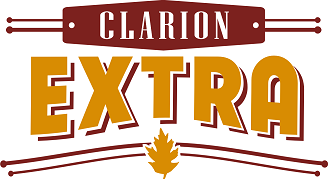From staff reports
Bit by bit, yard by yard.
That’s how Seneca Rocks Audubon Society, the local chapter of National Audubon, hopes to improve and expand habitat for birds and other wildlife through its Bird-Friendly Habitat program.
The program shines a light on the importance and possibility of creating healthy habitat for birds in backyards, patios, parks, schools and public spaces. And restoring a backyard ecosystem for the birds also benefits other wildlife and the homeowner, according to National Audubon.
While there are preserves such as national and state parks and forests, and state game lands sets aside for wildlife, there are huge gaps in desirable bird habitat outside of those areas.
The Bird-Friendly Habitat program seeks to close those gaps by improving natural habitat in people’s own backyards throughout Pennsylvania. It encourages homeowners and property owners to provide four essential requirements for birds — food, shelter, nesting area and water.
There are various options for providing each of those elements, making the improvement of bird habitat within reach of many homeowners and other interested property owners.
Native plants, or plants that existed in Pennsylvania before European settlers, are the foundation of a healthy, functioning ecosystem and provide birds with food and a place to rest and nest, National Audubon says.
Some familiar native wildflowers in Pennsylvania are black-eyed susan, blazing star, wild geranium, eastern columbine, beebalm and butterfly weed. Examples of native shrubs are blueberries, summer sweet and spicebush.
Pennsylvania native trees include oak, flowering dogwood, eastern white pine and many others.
While native plants provide food for insects, the insects in turn provide valuable food to birds and their babies. According to National Audubon, most seed-eating birds switch to eating insects in the spring and summer when they are available. Also, research has shown that 96% of land birds feed insects to their babies.
Native plants provide food directly to birds through their seeds, nuts, berries and nectar.
Native shrubs, trees, and grasses provide shelter from the elements and predators, and nesting opportunities.
The Bird-Friendly Habitat program recognizes the efforts of a person or organization to make their outdoor spaces more sustainable for the birds. If all four habitat criteria are met, a property can be enrolled in the program.
And for a fee of $25, the property owner receives a colorful metal sign that can be posted in the yard.
Alice Thurau of Seneca Rocks Audubon said the enrollment application outlines different options for meeting all the criteria and makes it fairly easy for a person to qualify.
“Our goal is to have Bird-Friendly Habitat in as many yards as possible to help reverse habitat loss and the loss of bird populations,” Thurau said. “Our collective efforts can truly make a difference.”
More information about Bird-Friendly Habitat, helpful articles for getting started and the enrollment application can be found at pa.audubon.org/bfc.
Thurau can be reached by email at althurau@gmail.com.

